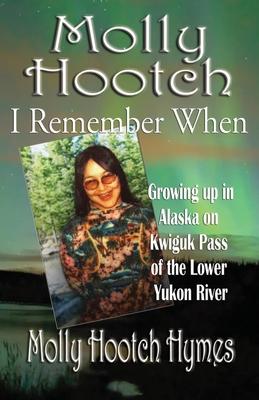Everyone in the family, except her mother, was away at fish camp. Her mother, Sophie, stayed in the village of Emmonak, awaiting the birth of her second daughter, Molly. Molly was born in the territory of Alaska in the summer of 1956. Alaska would not become a state in the union until 1959. Molly Hootch was born into a family that knew only a subsistence lifestyle along the banks of the lower Yukon River. It was a harsh life by today's standards. Her mother was the typical Native wife. Her father, James, was a fisherman, trapper, and hunter. He built dogsleds, boats, snowshoes, and fish traps. Molly, while a young girl, enthusiastically followed her father and observed his lifestyle that made her people Eskimo. He taught her everything she needed to know about living a subsistence existence. From this rugged environment, Molly breathed the Alaska air, loved deeply, lived fully, studied diligently--and made history! As a teenager, Molly had to leave Emmonak to attend high school in Anchorage. That traumatic departure led to a class action lawsuit against the State of Alaska Department of Education, called the Molly Hootch Case. The court case settlement resulted in the construction of high schools in Native villages. It made Molly Hootch a household name in Alaska during the last half of the 1970s. She was selected as the most influential person of the decade of the 1970s. She was also honored as the fifteenth most important person since Alaska statehood.

Molly Hootch: Growing up in Alaska on the Kwiguk Pass of the Lower Yukon River
Everyone in the family, except her mother, was away at fish camp. Her mother, Sophie, stayed in the village of Emmonak, awaiting the birth of her second daughter, Molly. Molly was born in the territory of Alaska in the summer of 1956. Alaska would not become a state in the union until 1959. Molly Hootch was born into a family that knew only a subsistence lifestyle along the banks of the lower Yukon River. It was a harsh life by today's standards. Her mother was the typical Native wife. Her father, James, was a fisherman, trapper, and hunter. He built dogsleds, boats, snowshoes, and fish traps. Molly, while a young girl, enthusiastically followed her father and observed his lifestyle that made her people Eskimo. He taught her everything she needed to know about living a subsistence existence. From this rugged environment, Molly breathed the Alaska air, loved deeply, lived fully, studied diligently--and made history! As a teenager, Molly had to leave Emmonak to attend high school in Anchorage. That traumatic departure led to a class action lawsuit against the State of Alaska Department of Education, called the Molly Hootch Case. The court case settlement resulted in the construction of high schools in Native villages. It made Molly Hootch a household name in Alaska during the last half of the 1970s. She was selected as the most influential person of the decade of the 1970s. She was also honored as the fifteenth most important person since Alaska statehood.